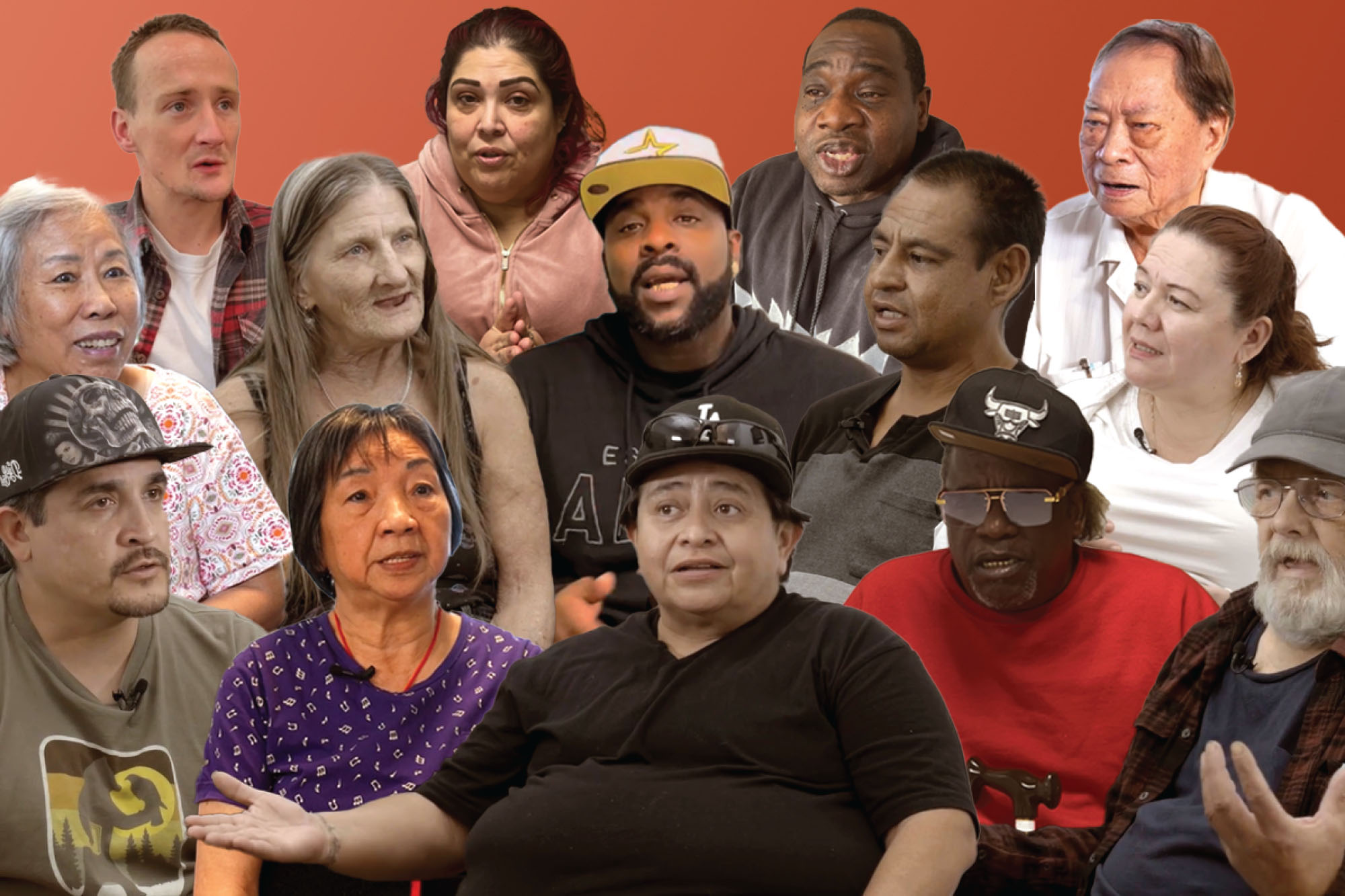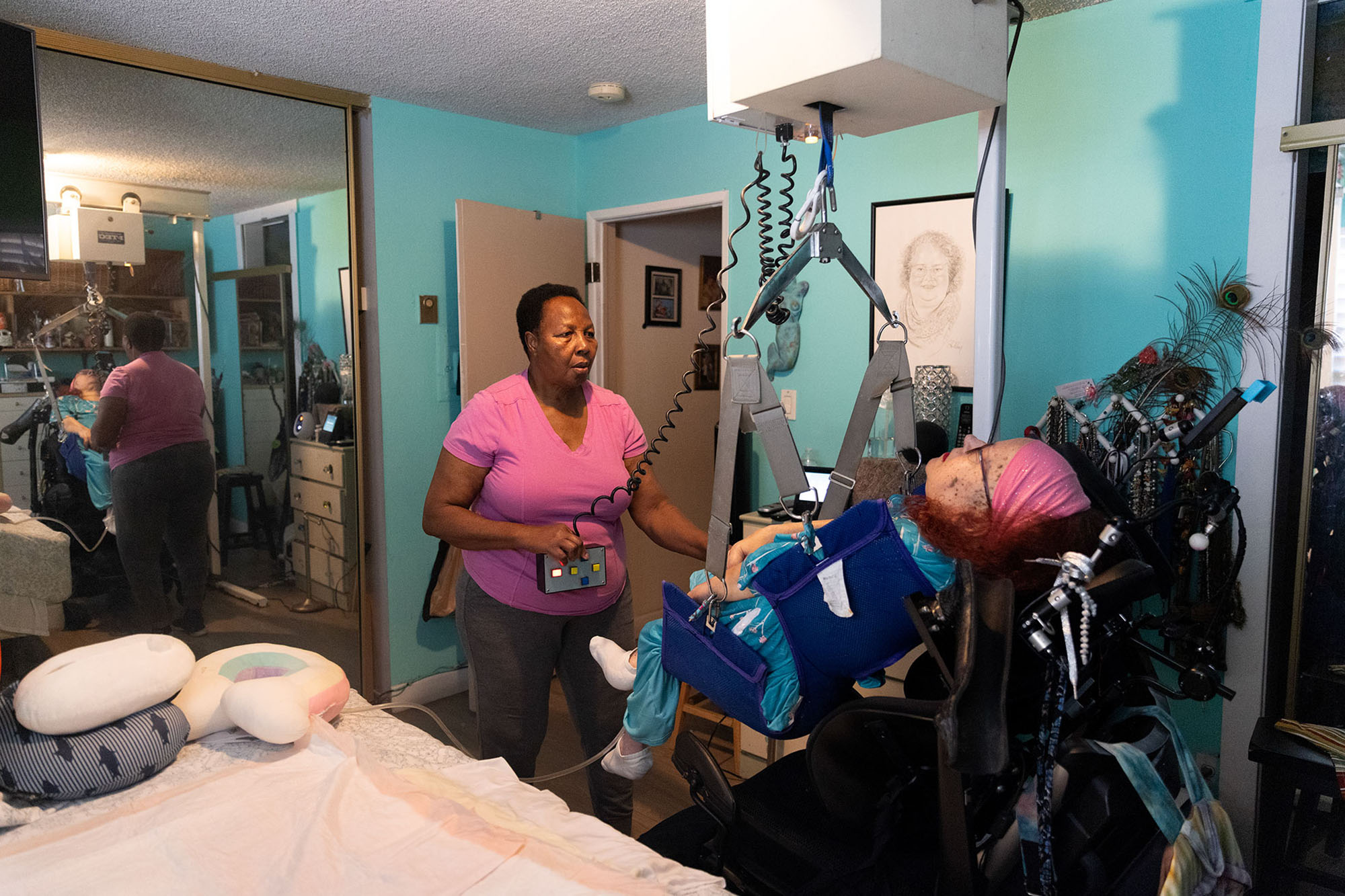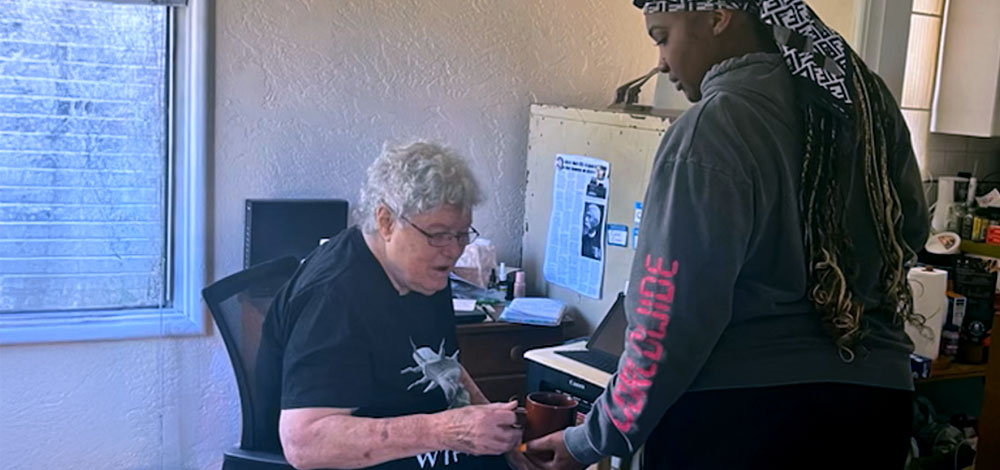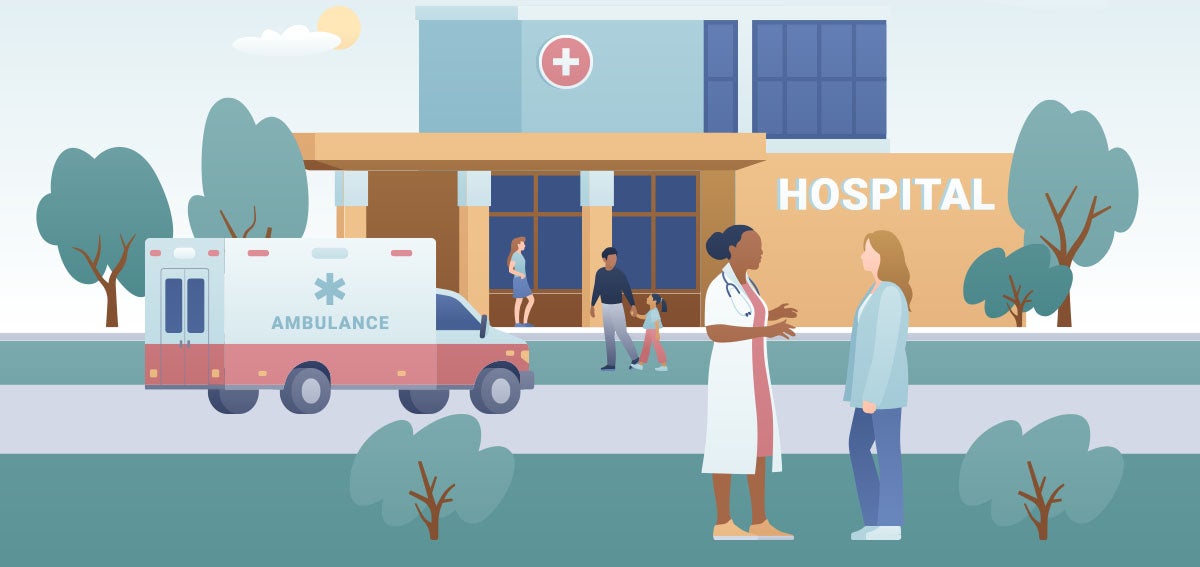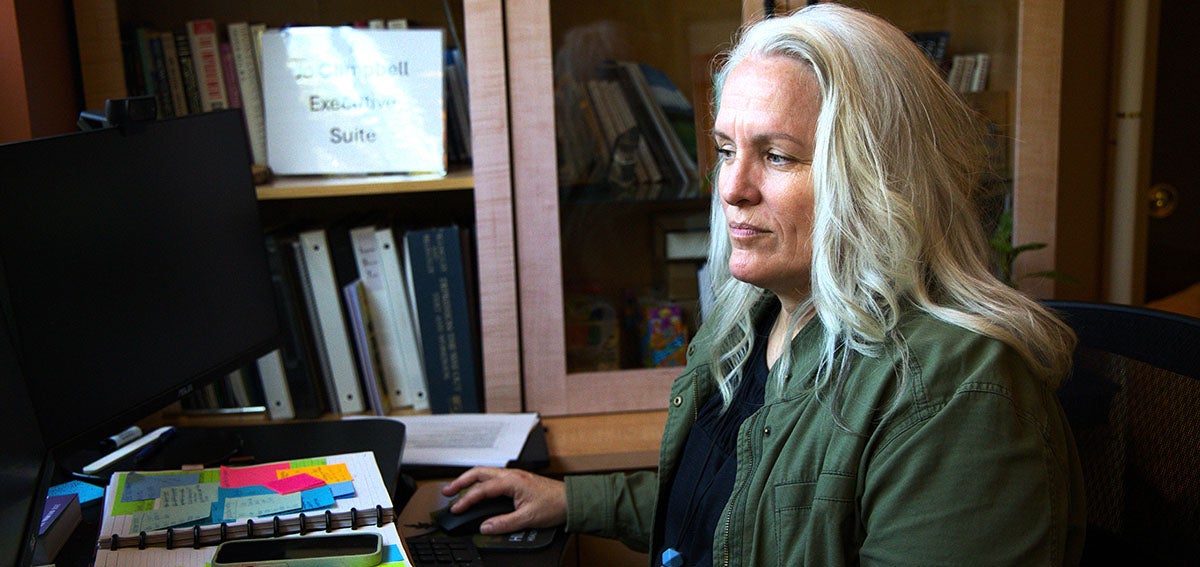|
Getting your Trinity Audio player ready…
|

California is more than 18 months into the rollout of CalAIM, the multiyear effort to transform the state’s Medi-Cal program. This major reform has the potential to improve outcomes for the millions of people enrolled in Medi-Cal. It also offers an unprecedented opportunity to move to a more integrated and people-centered approach for Californians with the most complex health and social needs, including those with behavioral health conditions, people experiencing homelessness, and older adults with low incomes.
There have been successes and challenges as the many varied programs have launched. To better understand how the state’s Department of Health Care Services (DHCS) is managing this massive change, I recently spoke with Susan Philip, MPP, deputy director of health care delivery systems for DHCS, to learn about how the CalAIM rollout is going and what DHCS is doing to support its implementation. This interview has been edited for length and clarity.
Q: CHCF recently conducted several focus groups and found that participants were simultaneously holding two conflicting feelings. On one hand, they had a sense of optimism, and on the other hand, they had a sense of frustration with the day-to-day challenges of implementation. If you could meet with them today, what would you say?
A: I would say that’s normal for anything that’s hard, right? Any large, complex undertaking is difficult. CalAIM is a long-term commitment to transform Medi-Cal. Ultimately, we’re working to make the Medi-Cal program more equitable, coordinated, and person-centered. Our vision is that CalAIM will be a model of transformation for the health care sector, which is an ambitious and worthwhile goal. I am encouraged that there is genuine excitement about the vision of CalAIM and the successes we are already seeing.
Q: One of the biggest challenges that we heard from all types of providers was about differences in how individual managed care plans are implementing Enhanced Care Management and Community Supports. You recently released new guidance to address some of those differences. Tell us why you made the changes and what you hope they’ll accomplish.
A: We purposefully sought feedback from our stakeholders, plan partners, and providers. DHCS leadership went on a listening tour throughout the state to better understand implementation “pain points” and hear recommendations for improvement.
Based on these feedback loops, we are implementing an action plan (PDF) that includes near-term and longer-term adjustments in policy and guidance. First, we are committed to standardizing eligibility. On the Enhanced Care Management (ECM) side, we have heard that there’s variation in how managed care plans are implementing eligibility for the benefit.
One example of stringent eligibility criteria is that some plans require at least three contacts with a member to demonstrate engagement before the plan considers that member authorized for ECM. That’s an unnecessary barrier. If an individual meets the ECM population of focus eligibility, they should be authorized for ECM. Period. Plans must not impose additional requirements for authorization for ECM services beyond eligibility criteria.
On the Community Supports services side, we initially said that plans could have the option of narrowing eligibility requirements as a way to meet member needs and be responsive to provider capacity limitations. However, there were unintended consequences with that flexibility and confusion in the market. So we changed our policy and stated that by January 1, 2024, plans must come into alignment with the DHCS service definitions and eligibility criteria (PDF). In other words, plans will no longer be able to narrow the eligibility criteria or impose additional limitations on the service definitions. So we are now requiring consistency across plans by requiring adherence to the policy sooner rather than later. This is already helping providers and reducing administrative burden — especially for those organizations that work with more than one managed care plan.
There was also work needed to streamline authorization processes, especially for time-sensitive Community Supports like recuperative care or short-term post-hospitalization housing services. Access to these time-sensitive services was complicated by managed care plans’ authorization processes — sometimes causing delays or lack of access to these services.
We had previously issued guidance that plans had to authorize those services within a specific, expedited time frame, but now we’re encouraging plans to work with their Community Support provider and define a process and appropriate circumstances for presumptive or retroactive authorizations. Recuperative care and short-term post-hospitalization services are authorized nearly 100% of the time, so streamlining the process can reduce the time it takes for people to access these critical services.
Q: You recently released a report on 2022 utilization of Enhanced Care Management and Community Supports. Not surprisingly, it shows a lot of variation between counties and plans. What are some of the bright spots from that report?
A: The report showed that implementation is moving ahead and, as expected, there’s still work to do. As you know, ECM launched in January 2022 with three populations of focus. So in 2022, a total of 109,000 Medi-Cal managed care members received ECM. We see ECM enrollment growing each quarter, and we expect this trend to continue as more populations of focus become eligible for ECM.
As a reminder for Community Supports, managed care plans are not required to cover all Community Supports currently — but they are encouraged to do so. A bright spot is that in 2022, at least two Community Supports were available in every county. In 2023, that is growing. As of August, six Community Supports were offered in every county, and 13 of California’s 58 counties were offering all 14 Community Supports. What we call the “trio” of housing-related Community Supports services — navigation, tenancy, and deposits — were the Community Supports most offered in 2022.
Q: Some of the Community Supports providers in our focus groups said they had signed contracts a year ago but have yet to see a single referral. This was particularly true for asthma remediation providers. Why do you think some services like the housing bundle have really taken off while others have moved more slowly?
A: There’s more awareness of how to operationalize some Community Support services than others. For example, we found that providers and managed care plans understood asthma remediation but lacked a full understanding of how to implement it as a Community Support (PDF). Finding the right community-based provider that understands how to identify and address asthma triggers is key.
Our vision is to ensure there’s enough capacity in the system for us to move Community Supports to a benefit. We must use these initial CalAIM years to demonstrate that these are, in fact, viable benefits with sufficient use and sufficient providers in the health care delivery system throughout the state.
I will also add that we are reinforcing to plans and stakeholders that most referrals for ECM and Community Supports should really come from providers in the community, not the plan. Of course, the plans should identify people who could be eligible for services, but that should not be the only or even primary source of referral. This means building awareness of how referrals can be made for ECM and Community Supports.
Q: We also see lower uptake in rural areas. How are you supporting implementation in rural areas?
A: We have several funding streams to support building capacity. I will mention a couple. For managed care plans, there’s what is known as the Incentive Payment Program, or IPP. Plans can make payments to partners within their community that are interested in delivering ECM and Community Support services and scaling CalAIM initiatives. For example, IPP dollars are intended to encourage data exchange agreements and infrastructure development among plans and providers.
Another funding stream is Providing Access and Transforming Health, also known as PATH. This is $1.84 billion that goes directly to providers participating in CalAIM to build up Enhanced Care Management, Community Supports, and justice-involved initiatives throughout the state. We are interested in supporting on-the-ground partners, such as community-based organizations, hospitals, county agencies, local health jurisdictions, tribes, and others, with a particular focus in supporting rural and other historically under-resourced areas. Under the PATH CITED initiative, “start-up” dollars that organizations can use to support certain investments such as billing systems and data-exchange capabilities are available for successful applicants.
Q: As you mentioned earlier, the CalAIM initiative demands a huge amount of change. One of the things people need when there’s a lot of change is a road map to implementation. In our focus groups, some people said they were frustrated with the rollout of guidance from DHCS. They said it was released at the last minute or was constantly changing. How are you balancing the urgency to innovate with the very real bandwidth concerns among providers, especially coming out of the COVID-19 pandemic?
A: There’s always a fine line between balancing what we as a department can standardize on a statewide basis against the degree of flexibility we should allow at the local level. Being overly prescriptive could stifle innovation or hamper organizations working together at the local level. At the same time, we want to be responsive when there is a clear need for detailed, prescriptive guidance that will reduce administrative burden and smooth out implementation challenges. As I mentioned earlier, this past year we obtained feedback from the field on where we need to standardize. We have a road map for how we will make adjustments over the next year (PDF). That should give our partners a sense of the policy areas we’ll be focusing on to engage, as well as venues for participating in making improvements. We always appreciate partners who are willing to share what’s going on. For example, under PATH we established Collaborative Planning and Implementation forums. These are 25 regional collaboratives bringing together over 800 different entities in facilitated sessions to identify and address implementation gaps. Any entity looking to participate in CalAIM can register and join these forums and connect with local partners.
Q: We’re more than 18 months into this five-year initiative, with more changes on the horizon. What are you anticipating in the coming year?
A: I’m really looking forward to continuing to engage in certain elements of policy development. And I am excited about various initiatives under PATH. Under CITED, we have already awarded $207 million to 137 organizations. We also have the Technical Assistance Marketplace — which presents a lot of opportunity for entities needing that hands-on technical assistance to match with vetted vendors. So there’s a lot of capacity in the pipeline. I’m really excited about all the organizations that have raised their hands and said, “Yes, we want to do this.”
Authors & Contributors

Melora Simon
Associate Director, People-Centered Care

Constanza Hevia H.
Constanza Hevia H. is a Chilean documentary photographer and filmmaker. She documents visual stories focused on social and cultural issues. Constanza uses photography, audio, and video as tools for social observation and as a language to communicate narratives that usually are not represented in mainstream media and society.
Based in both San Francisco and in Chile, she is a member of Women Photograph, Foto Féminas, and Diversify Photo. She works for a variety of nonprofits and organizations with social justice missions. Her work has been published in the San Francisco Chronicle, The Guardian, and the Wall Street Journal, among others.

